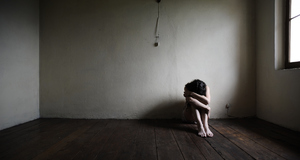The History of Mental Illness: From Skull Drills to Happy Pills
By
2010, Vol. 2 No. 09 | pg. 1/4 | »
KEYWORDS:
The limitlessly varied personalities of human beings have fascinated both scientists and fellow members of society throughout the existence of humankind. Of particular interest has been what happens when man’s mind turns against him, and what can be done, if anything at all, to reverse this tragic event. Attempts to treat mental illness date back as early as 5000 BCE as evidenced by the discovery of trephined skulls in regions that were home to ancient world cultures (Porter 10). Early man widely believed that mental illness was the result of supernatural phenomena such as spiritual or demonic possession, sorcery, the evil eye, or an angry deity and so responded with equally mystical, and sometimes brutal, treatments. Trephining (also referred to as trepanning) first occurred in Neolithic times. During this procedure, a hole, or trephine, was chipped into the skull using crude stone instruments. It was believed that through this opening the evil spirit(s)--thought to be inhabiting one’s head and causing their psychopathology--would be released and the individual would be cured (“Measuring”). Some who underwent this procedure survived and may have lived for many years afterward as trephined skulls of primitive humans show signs of healing. Pressure on the brain may have also incidentally been relieved (Butcher 28). This procedure endured through the centuries to treat various ailments such as skull fractures and migraines as well as mental illness, albeit with more sophisticated tools such as skull saws and drills developed solely for this purpose (“Measuring”).In ancient Mesopotamia, priest-doctors treated the mentally ill with magico-religious rituals as mental pathology was believed to mask demonic possession (Alexander 19). Exorcisms, incantations, prayer, atonement, and other various mystical rituals were used to drive out the evil spirit. Other means attempted to appeal to the spirit with more human devices--threats, bribery, punishment, and sometimes submission, were hoped to be an effective cure (Alexander 8). Figure 1: A depiction of treppaning from the painting Cutting the Stone (circa 1494) by Hieronymus Bosch. Hebrews believed that all illness was inflicted upon humans by God as punishment for committing sin, and even demons that were thought to cause some illnesses were attributed to God’s wrath. Yet, God was also seen as the ultimate healer and, generally, Hebrew physicians were priests who had special ways of appealing to the higher power in order to cure sickness. Along the same spiritual lines, ancient Persians attributed illness to demons and believed that good health could be achieved through proper precautions to prevent and protect one from diseases. These included adequate hygiene and purity of the mind and body achieved through good deeds and thoughts (Alexander 20-22). Ancient Egyptians seem to be the most forward-thinking in their treatment of mental illness as they recommended that those afflicted with mental pathology engage in recreational activities such as concerts, dances, and painting in order to relieve symptoms and achieve some sense of normalcy. The Egyptians were also very advanced in terms of medicine, surgery, and knowledge of the human body. Two papyri dating back to the sixteenth century BCE, the Edwin Smith papyrus and the Ebers papyrus, document early treatment of wounds, surgical operations, and identifies, very likely for the first time, the brain as the site of mental functions. These papyri also show that, despite innovative thinking about disease, magic and incantations were used to treat illnesses that were of unknown origin, often thought to be caused by supernatural forces such as demons or disgruntled divine beings (Butcher 28). Ancient Egyptians also shared the early Greek belief that hysteria in women, now known as Conversion Disorder, was caused by a “wandering uterus,” and so used fumigation of the vagina to lure the organ back into proper position (Alexander 21). In all of these ancient civilizations, mental illness was attributed to some supernatural force, generally a displeased deity. Most illness, particularly mental illness, was thought to be afflicted upon an individual or group of peoples as punishment for their trespasses. In addition to the widespread use of exorcism and prayer, music was used a therapy to affect emotion, and the singing of charms and spells was performed in Babylonia, Assyria, the Mediterranean-Near East, and Egypt in hopes of achieving a cure (Rosen). Beliefs about mental illness and proper treatments were altered, and in some cases advanced, by early European thinkers. Between the 5th and 3rd centuries BCE, Greek physician Hippocrates denied the long-held belief that mental illness was caused by supernatural forces and instead proposed that it stemmed from natural occurrences in the human body, particularly pathology in the brain. Hippocrates, and later the Roman physician Galen, introduced the concept of the four essential fluids of the human body—blood, phlegm, bile, and black bile—the combinations of which produced the unique personalities of individuals (Butcher 29). Through the Middles Ages, mental illness was believed to result from an imbalance of these humors. In order to bring the body back into equilibrium, patients were given emetics, laxatives, and were bled using leeches or cupping (MacDonald 187). Specific purges included a concoction developed by Ptolemy called Hiera Logadii, which combined aloes, black hellebore, and colocynth and was believed to cleanse one of melancholy. Confectio Hamech was another laxative developed by the Arabs that contained myrobalans, rhubarb, and senna (MacDonald 187). Later, tobacco imported from America was popularly used to induce vomiting (MacDonald 188). Other treatments to affect the humors consisted of extracting blood from the forehead or tapping the cephalic, saphenous, and/or hemorroidal veins to draw corrupted humors away from the brain (MacDonald 191). In addition to purging and bloodletting (also known as phlebotomy), customized diets were recommended. For example, “raving madmen” were told to follow diets that were “cooling and diluting,” consisting of salad greens, barley water, and milk, and avoid wine and red meat (Porter 42). Custody and care of the mentally ill were generally left to the individual’s family, although some outside intervention occurred. The first mental hospital was established in 792 CE Baghdad and was soon followed by others in Aleppo and Damascus—mass establishment of asylums and institutionalization took place much later, though (Butcher 32). The mentally ill in the custody of family were widely abused and restrained, particularly in Christian Europe. Due to the shame and stigma attached to mental illness, many hid their mentally ill family members in cellars, caged them in pigpens, or put them under the control of servants (Porter 92). Others were abandoned by their families and left to a life of begging and vagrancy. The social stigma attached to mental illness was, and to some extent still is, pronounced in countries that have strong ties to family honor and a reliance on marriages to create alliances and relieve families of burdensome daughters. In China, the mentally ill were concealed by their families for fear that the community would believe that the affliction was the result of immoral behavior by the individual and/or their relatives. The mentally ill were also thought to have “bad fate” that would negatively influence anyone who associated with the disturbed individual, scaring away potential suitors and leading to the idea that mental illness was contagious (Phillips 10). Historically in Greece, “a mentally ill [family] member implies a hereditary, disabling condition in the bloodline and threatens [the family’s] identity as an honorable unit,” therefore treatment of the mentally ill in these cultures meant a life of hidden confinement or abandonment by one’s family (Blue 305). Mentally ill vagrants were left alone to wander the streets so long as they did not cause any social disorder. Those who were deemed dangerous or unmanageable, both in family homes or on the streets, were given over to police and thrown in jails or dungeons, sometimes for life (Stigma 43). Particularly in Europe during the Middle Ages, beatings were administered to the mentally ill who acted out as punishment for the disturbances their behavior caused and as a means of “teaching” individuals out of their illnesses. Others who were considered nuisances were flogged out of town (Rosen). Through the Middle Ages and until the mass establishment of asylums, treatments for mental illness were offered by humanistic physicians, medical astrologers, apothecaries, and folk or traditional healers (MacDonald 175). Aside from secular exorcisms, prayers, charms, amulets, and other mystical treatments were available. In the 17th century, astral talismans were popular and were easily made using brass or tin emblems with astrological signs etched into them and cast at astrologically significant times. These were worn around the neck of the afflicted while they recited prayers (MacDonald 213-214). Also worn around the neck were scraps of Latin liturgy wrapped in paper, bundled with a leaf of mugwort or St. John’s Wort and tied with taffeta (MacDonald 214). Amulets were also used, supplemented by prayers and charms, to soothe troubled minds, prevent mystical infection, and protect against witches and evil spirits (MacDonald 214). Sedatives during the 17th century consisted of opium grains, unguents, and laudanum to “ease the torment” of mental illness (MacDonald 190).Continued on Next Page » Suggested Reading from Inquiries Journal
Inquiries Journal provides undergraduate and graduate students around the world a platform for the wide dissemination of academic work over a range of core disciplines. Representing the work of students from hundreds of institutions around the globe, Inquiries Journal's large database of academic articles is completely free. Learn more | Blog | Submit Latest in Psychology |



















